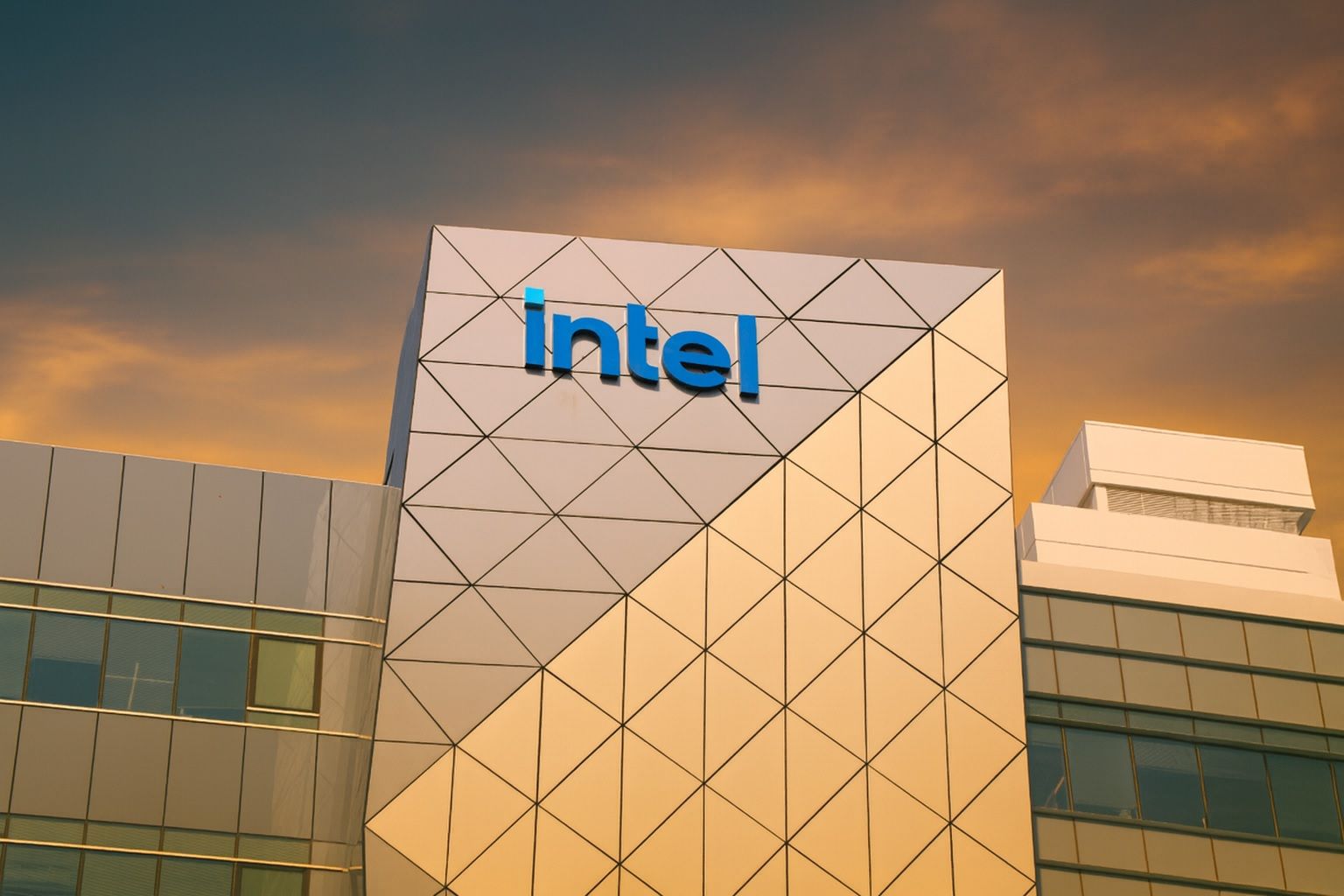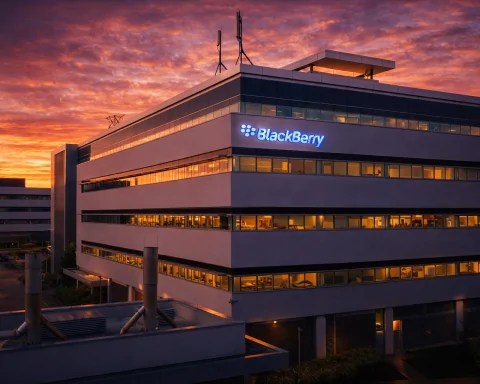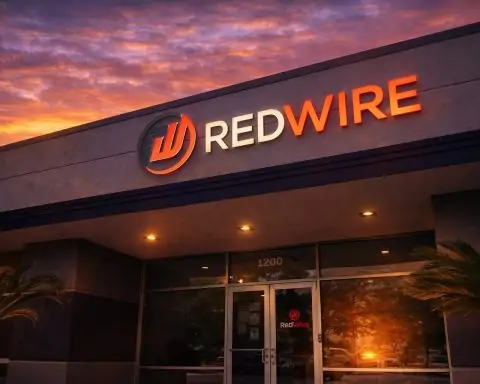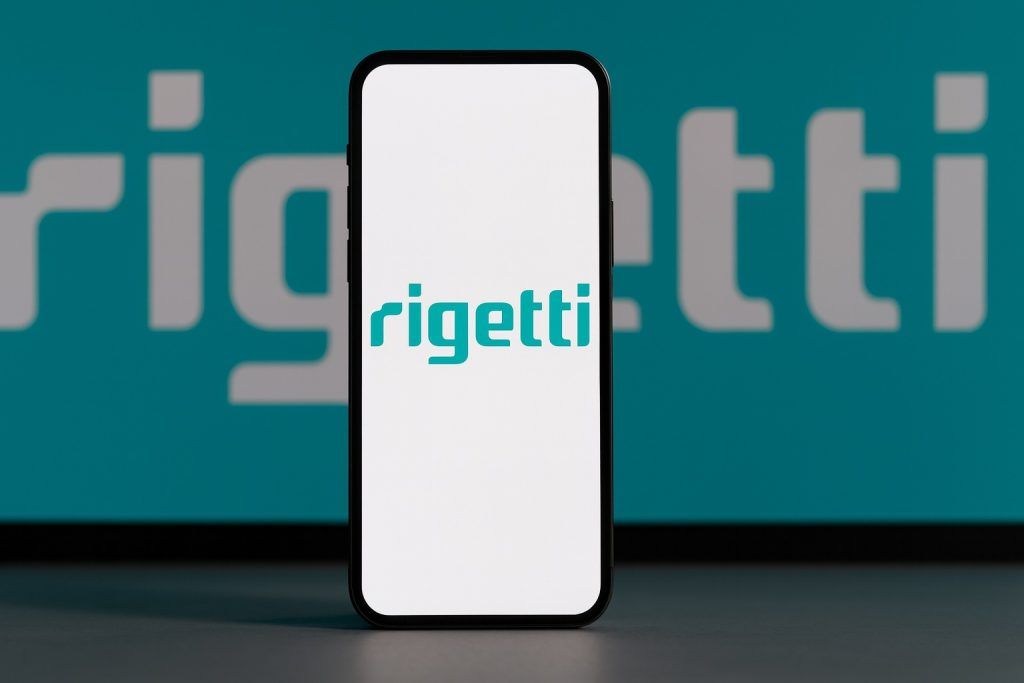- Record Rally: Intel’s shares have jumped dramatically in 2025. By mid-October the stock traded around $36–37, its highest level in over two years [1], roughly double its January lows (an ~85% year-to-date gain).
- Big Backers Pour In: A string of deals has bolstered the stock. In August, the U.S. government agreed to convert CHIPS Act grants into a 9.9% stake in Intel (~$8.9 billion) [2] [3]. SoftBank invested $2 billion, and in mid-September NVIDIA announced a $5 billion (≈4%) stake [4]. Rumors in late September that Apple might also invest sent shares up ~6% [5].
- AI Chip Initiative: Intel signaled a renewed AI push. At an October summit, CTO Sachin Katti unveiled a new “Crescent Island” AI data-center chip (GPU) slated for 2026, emphasizing energy-efficient inference performance [6]. Katti said the chip is “optimized for AI… delivering the best performance per dollar out there” [7].
- Financials & Turnaround: Intel’s Q2 2025 results showed flat revenue (~$12.9 billion) and continued losses. CEO Lip-Bu Tan, hired March 2025, has cut roughly 20% of the workforce (targeting ~75,000 employees by year-end) and paused some fab expansion projects to conserve cash [8]. The company does not expect to return to profitability until 2026 [9].
- Analysts Cautious: Despite the rally, Wall Street remains wary. The consensus 12-month price target is only about $28 (≈23% below the current price) [10], and most analysts rate INTC a Hold or worse [11] [12]. For example, Bank of America recently downgraded Intel to “Underperform”, warning the stock has climbed “too far, too fast” without real improvements in fundamentals [13] [14].
- Competitive Context: Intel’s surge comes amid an AI chip boom that has lifted rivals even more. AMD’s shares hit record highs on major AI contracts, and NVIDIA now dominates data-center AI processors (roughly 90% market share) [15] [16]. NVIDIA’s market value tops $1 trillion, far above Intel’s (~$175 billion) [17]. Intel also lags in contract manufacturing: it has struggled to attract customers to its foundry business, which “has barely attracted external customers” compared to industry leader TSMC [18].
Intel’s stock market roller-coaster has become one of 2025’s top stories. After languishing in the teens and low-$20s in early 2025, INTC shares have roared higher in recent months. By Oct. 17 the stock closed around $37, its highest since 2023 [19]. As TS2.tech notes, the shares have “nearly doubled from its lows in January” on hopes of a turnaround [20]. Much of the surge is tied to investor excitement over Intel’s role in the AI chip revolution and a flurry of unexpected big-money deals.
One key catalyst was Washington’s intervention. In late August the Trump administration announced it would purchase ~9.9% of Intel using unspent funds from the Biden-era CHIPS Act [21] [22]. At $20.47 per share (about a $4 discount to the market price), the $8.9 billion deal was pitched as support for U.S. chip factories. President Trump even celebrated it as a win, quipping after meeting Intel’s CEO that the company had effectively “gave us $10 billion” to bolster factories [23]. (Intel clarified this equity stake is passive with no board seat, and includes a warrant to buy more stock if Intel’s foundry falters [24].) This unprecedented government backing pushed the stock up over 5% on the announcement day [25]. Around the same time, Japan’s SoftBank Vision Fund quietly invested $2 billion for equity in Intel [26], further signaling confidence.
Wall Street’s biggest vote of confidence came mid-September when NVIDIA agreed to invest $5 billion in Intel (about a 4% stake) and jointly develop future PC and data-center chips [27]. That surprise Nvidia–Intel alliance — meant to integrate Intel CPUs with Nvidia GPUs — sent INTC shares soaring over 22% in one day on Sept. 18 (the largest one-day jump since 1987) [28]. Traders were also buoyed by media reports: according to Reuters/Bloomberg, Intel approached Apple about a strategic investment in late September [29]. While Apple and Intel declined comment, the mere rumor drove Intel’s stock up about 6% on Sept. 25 [30]. (Apple once used Intel chips in iPhones, and a deal now could help Apple diversify beyond its reliance on Taiwan’s TSMC for chipmaking [31] [32].)
These deals and rumors have injected “AI hype” into Intel’s story. TS2.tech reports that investor enthusiasm is high amid chatter of big AI customers and partnerships [33] [34]. For example, an October report that Microsoft might use Intel to fabricate some chips (for Azure AI servers) briefly lifted the stock [35]. Intel’s CEO Lip-Bu Tan has seized on these moments; he told investors that Intel is working to ensure “Intel’s central processors (CPUs) are installed in every AI system that gets sold” [36]. To reinforce its technology roadmap, Intel announced a new AI chip called Crescent Island. Unveiled at the Open Compute Summit, this data-center GPU is optimized for inference and energy efficiency, and will ship with 160 GB of memory (slower than Nvidia’s high-bandwidth memory) [37] [38]. Intel’s messaging emphasizes “best performance per dollar” for AI tasks [39]. Executives say this is the first in an annual cadence of new AI chips, matching competitors’ update cycles [40].
At the same time, Intel is overhauling its business. On the financial front, Q2 2025 results showed the turnaround is still in progress: revenue was $12.9 billion (roughly flat year-on-year) and gross margins remained below 30%, leaving Intel unprofitable for the quarter [41]. New CEO Tan (formerly an outside industry veteran) has taken drastic cost-cutting measures. He announced another round of layoffs (about 20% of Intel’s 2024 headcount) to reach ~75,000 employees by year-end [42], and has halted some planned fab expansions to conserve cash. Intel is also spinning off non-core assets (it recently agreed to sell a 51% stake in its FPGA division, Altera, to Silver Lake at a steep discount [43]) as part of refocusing on its semiconductor core. Executives admit Intel still trails rivals in key areas: for example, Intel’s AI efforts were “stalled” under the prior CEO, and Tan has vowed to restart mothballed projects like its Gaudi and Falcon AI chips [44].
Analysts and experts are split on what’s next. On the bullish side, some point out that Intel has secured over $18 billion in new funding (≈$11.1B U.S. + $5B Nvidia + $2B SoftBank) that strengthens its balance sheet and foundry business [45] [46]. Industry veterans have praised Tan’s deal-making. CNBC and Wall Street “Mad Money” host Jim Cramer labeled Tan a “legendary semiconductor investor” for clinching these partnerships, noting they “sparked a roughly 50% rally” in the stock [47]. UBS analysts recently raised their 12-month target to $40 (from $35) even while keeping a Neutral rating, arguing Intel’s foundry and other segments may be undervalued [48] [49]. TipRanks data show a few optimistic targets as high as $43 [50], reflecting the view that Intel could still surprise if its factories begin winning big contracts.
However, most Wall Street strategists sound a note of caution. Bank of America analysts downgraded Intel to “Underperform” in mid-October, warning that the stock has surged “too far, too fast” without real operational improvement [51]. They point out that despite the hype, Intel’s long-term outlook is “remains challenged with no discernible AI portfolio/strategy” [52]. Bernstein Research similarly quipped that Intel “remains fundamentally challenged” – yet admitted they’ve “been terrified to short it” since even the President is pushing the stock higher [53]. In effect, many analysts say the current rally is largely being driven by deals and political backing, not by new customers or products yet. As Seaport Research Partners (recently upgraded to Neutral) put it, Intel’s momentum “is likely to be driven by follow-on investments,” while its core business still has to prove itself [54]. Visible Alpha shows the Street’s consensus 12-month price target at roughly $26 [55] – about 28% below the current level – implying most see a pullback once the deal buzz fades [56] [57]. Indeed, even the recent high volume suggests the stock may be overheating: a Reuters timeline notes Intel’s shares leaped nearly 80% in 2025 before Wednesday’s session [58], prompting some traders to take profits.
Looking beyond Intel itself, the broader semiconductor industry context is crucial. The AI boom has made many chipmakers winners. AMD (Intel’s longtime rival in CPUs) has landed blockbuster AI chip deals – for example, Oracle will sell cloud servers powered by AMD’s new MI450 AI chips [59] [60], and AMD even has an option to supply OpenAI’s ChatGPT servers [61]. As a result, AMD’s stock recently hit all-time highs around $240 [62]. NVIDIA, Intel’s biggest competitor in AI hardware, is now worth well over $1 trillion [63] and even sells complete AI computing racks (integrating its GPUs and CPUs) [64]. Intel’s market cap (~$175 billion) is only about half of AMD’s and a fraction of NVIDIA’s [65]. On the manufacturing side, Taiwan’s TSMC remains dominant: Reuters notes that Intel’s foundry arm “has struggled to compete” with TSMC and has “barely attracted external customers” [66]. In fact, Intel has even approached TSMC about a partnership or investment to shore up its process technology [67]. In short, Intel is attempting a comeback in a cutthroat environment where rivals have already surged on the AI wave.
Outlook: For Intel investors, the near-term outlook is event-driven. The upcoming catalyst is Q3 earnings on Oct. 23 – Intel has warned of a slight revenue increase but an even bigger net loss [68]. Much will depend on whether the company can signal progress on its foundry business or AI roadmaps. Beyond earnings, attention will focus on whether Intel can convert those funding deals into real customers. If, for example, Microsoft or others do award significant fabrication contracts, that could validate the hype. If not, analysts expect the stock to cool off. Even Wall Street bulls acknowledge the stock is underpinned by political and financial support rather than fundamental turns. As Investopedia sums up, Intel “needs customers” more than money – government or investor cash will not guarantee a turnaround unless big clients sign on [69] [70].
For now, Intel’s story is compelling media fodder: a storied tech icon rescued by bold deals and political will. Whether it can translate that into sustainable growth remains to be seen. Investors should be aware that most price forecasts still imply a significant pullback, but they must weigh those cautions against the unusual tailwinds Intel currently has. In the high-stakes chip industry of 2025, anything – even Intel’s comeback – is possible, but consensus forecasts and expert commentary underscore that caution and patience are warranted [71] [72].
Sources: Recent news articles and analysis from Reuters, TS2.tech, Investopedia, MarketBeat, and others provided all data and quotes above [73] [74] [75] [76] [77] [78] [79] [80] [81] [82] [83]. (Intel stock price data from Oct. 17, 2025.)
References
1. ts2.tech, 2. www.reuters.com, 3. www.reuters.com, 4. www.reuters.com, 5. www.reuters.com, 6. www.reuters.com, 7. www.reuters.com, 8. ts2.tech, 9. ts2.tech, 10. www.marketbeat.com, 11. ts2.tech, 12. www.marketbeat.com, 13. www.investopedia.com, 14. www.investopedia.com, 15. ts2.tech, 16. www.reuters.com, 17. ts2.tech, 18. www.reuters.com, 19. ts2.tech, 20. ts2.tech, 21. www.reuters.com, 22. www.reuters.com, 23. www.reuters.com, 24. www.reuters.com, 25. www.reuters.com, 26. www.reuters.com, 27. www.reuters.com, 28. ts2.tech, 29. www.reuters.com, 30. www.reuters.com, 31. www.reuters.com, 32. www.reuters.com, 33. ts2.tech, 34. www.reuters.com, 35. ts2.tech, 36. www.reuters.com, 37. www.reuters.com, 38. www.reuters.com, 39. www.reuters.com, 40. www.reuters.com, 41. ts2.tech, 42. ts2.tech, 43. www.reuters.com, 44. www.reuters.com, 45. www.techi.com, 46. www.reuters.com, 47. ts2.tech, 48. markets.financialcontent.com, 49. markets.financialcontent.com, 50. ts2.tech, 51. www.investopedia.com, 52. www.investopedia.com, 53. www.investopedia.com, 54. www.investopedia.com, 55. www.investopedia.com, 56. www.investopedia.com, 57. www.marketbeat.com, 58. www.investopedia.com, 59. www.reuters.com, 60. www.reuters.com, 61. www.reuters.com, 62. ts2.tech, 63. ts2.tech, 64. www.reuters.com, 65. ts2.tech, 66. www.reuters.com, 67. www.reuters.com, 68. ts2.tech, 69. www.investopedia.com, 70. www.investopedia.com, 71. www.marketbeat.com, 72. www.investopedia.com, 73. www.reuters.com, 74. ts2.tech, 75. www.reuters.com, 76. www.investopedia.com, 77. www.reuters.com, 78. www.reuters.com, 79. www.investopedia.com, 80. www.reuters.com, 81. www.reuters.com, 82. www.marketbeat.com, 83. markets.financialcontent.com







